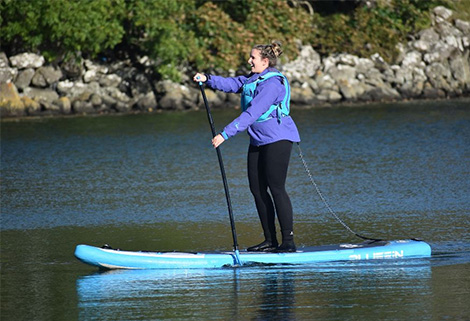iwa waterways for today
lives of individual people
IWA’s Waterways for Today report highlights the benefits of the waterways on the LIVES OF INDIVIDUAL PEOPLE
The final instalment of our blog series from IWA’s recently launched report – Waterways for Today looks at the benefits that the waterways bring to the lives of individual people. We have already highlighted the benefits to the economy, environment and local communities. The benefits for individual people focus on improved physical and mental health as well as creating better places to live. Living close to a waterway creates a sense of place that helps people to better enjoy their local area. By their very nature, waterways are often located in the centre of large towns and cities and can cut through some of the most deprived areas. Through regeneration, the waterways can be opened up to new sectors of the local community bringing greater inclusivity and diversity.
Improving Physical Health

The inland waterways provide up incredible opportunities for outdoor activities such as walking, running, cycling, fishing, sailing, canoeing, rowing, paddleboarding and volunteering. Waterside routes are free and accessible to all, offering flat gradients on good-quality paths. The Covid-19 pandemic brought significant numbers of people to the waterways for the first time and many have seen improvements to their physical health by getting out and about and undertaking healthy outdoor activities.
Better Mental Health & Wellbeing
The waterways offer a chance to connect with nature, take time out, relax and unwind. They also provide opportunities for shared social experiences. Walking the dog along the towpath, strolling with friends and family, watching the wildlife, photography, boat trips and visiting canalside pubs and cafes all provide a sense of wellbeing. Volunteering can also improve mental health through a renewed sense of purpose, making new friends and satisfaction of a job well done.
Better Places to Live
Waterside locations are perfect for allowing people to appreciate and enjoy the areas they live in. Local authorities need to embrace the trend for providing waterside homes and business premises as well as supporting the growth in residential boating. Redevelopment of the waterside should include residential moorings and facilities for boaters as well as providing for the wider local community.
Waterways and Wellbeing in Nottingham
One of the case studies in the report looks at the waterways and wellbeing in Nottingham. The project uses Nottingham’s canals as a focal point to help tackle mental and physical health problems as part of a social prescribing programme. It encourages local people to visit the canal and take part in a variety of activities including canoeing, running and paddleboarding as well as photography courses, art and craft activities, cookery classes and more. The project was initially only running for 12 months but given the positive results, it has been extended for another year.
To read the full IWA Waterways for Today report or to read the case studies related to all 12 benefits of the waterways please visit the IWA Website.
